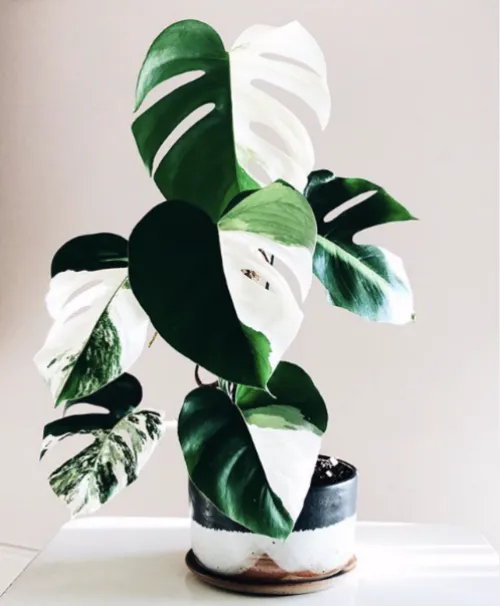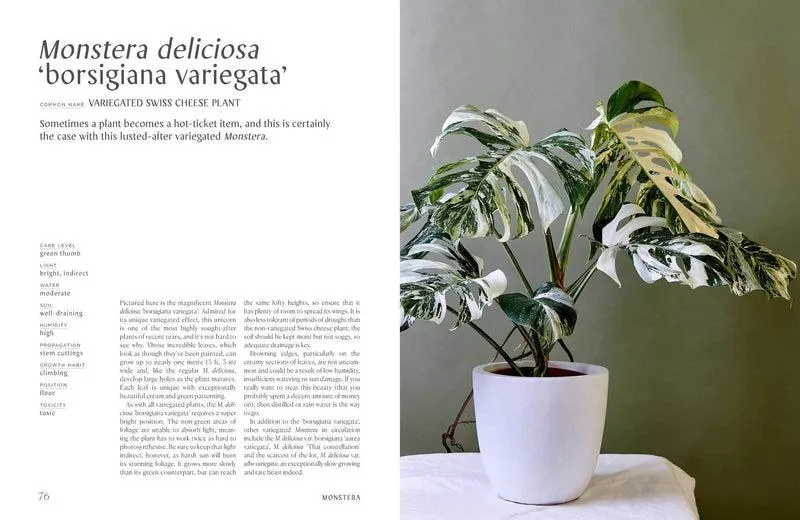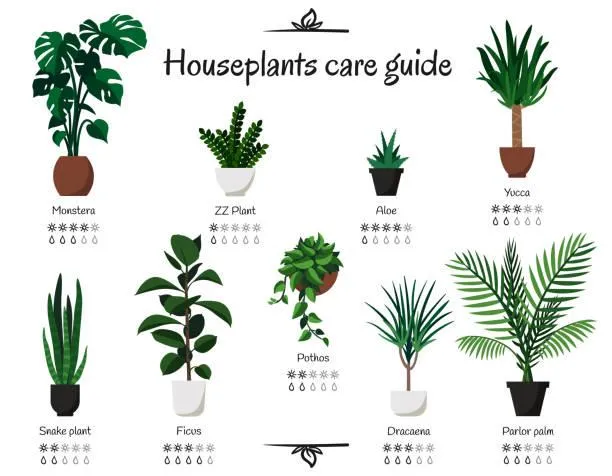A Comprehensive Guide to Different Types of Variegated Plants
If you’re interested in adding some colorful foliage to your garden or houseplants, variegated plants are a great choice. With patterns of different colors on their leaves, they can really jazz up a space. But with so many options out there, it can be tough to know where to start. In this article, I’ll give you an overview of some popular variegated plant varieties and help answer any other questions you may have.
What are Variegated Plants?
Let’s start with the basics – what exactly qualifies a plant as “variegated”? Simply put, variegation refers to distinctive patterns, spots or streaks of a different color than the basic leaf color. This contrast is usually achieved through chlorophyll deficiencies that leave some areas of the leaf solid green while others remain cream, yellow or white. The patterns can range from well-defined stripes or edges to splotches.
Variegation occurs naturally in some plant species due to genetic mutations. It’s primarily found in foliage houseplants and ornamental garden plants kept for their decorative leaves rather than blooms. The pigment differences don’t affect the health of the plant but can make them more prone to burning in strong sun.
Top Variegated Plant Options
Here are some of the most popular variegated plant varieties to consider:
- Philodendron: Heartleaf philodendron (Philodendron cordatum) has thick, waxy leaves splashed with cream or yellow. It’s super easy to care for and thrives in low or medium light.
- Pothos: Golden pothos (Epipremnum aureum) is notorious for being nearly indestructible. Its trailing vines sport bold yellow and green variegation.
- Peperomia: These make nice tabletop plants. Ruby cascade peperomia (Peperomia aureus) has oval leaves edged in bright pink.
- Monstera: Swiss cheese plant (Monstera deliciosa) is a dramatic choice with its large, heart-shaped foliage featuring natural fenestrations. Variegated types add creamy spots too.
- Chinese Evergreen: Also called aglaonema, the variegated “tricolor” kind has foliage striped in green, cream and pink. It tolerates low light well.
Care Tips Specific to Variegated Plants
While care needs vary by species, here are a few tips that generally apply to variegated plant care:

- Provide bright, indirect light. Most variegated plants can burn or lose their patterns if placed in direct sun for long periods. A bright windowsill that’s not right in the sun’s path is ideal.
- Watch for chlorosis. The loss of variegation/chlorophyll in some areas of a leaf is known as chlorosis. It’s a sign the plant may need more nitrogen or to be moved to a sunnier spot.
- Be vigilant about pests and disease. Since variegated parts of leaves lack chlorophyll, they’re more prone to infestations. Be on the lookout for signs of insects, mites or fungi.
- Consider propagating. To maintain a plant’s variegated pattern, you may need to propagate it from cuttings over time rather than growing from seed.
From Garden to Hanging Baskets – Where to Use Variegated Plants
Luckily, there are plenty of options for showcasing variegated plants whether you have an indoor setup, outdoor garden or both.
Indoors, try variegated pothos or philodendron vines trailing from hanging planters or tall pots. Tabletop plants like peperomia and polka dot plant add visual impact too. Outside, variegated liriope, hostas and caladium tubers bring nice foliage to shaded gardens beds. Hanging baskets are ideal for ivy geranium, fuchsia and sweet potato vine with their trailing growth habits.
If you’re starting a new landscape, variegated loropetalum, monkey grass or weigela offer year-round interest as medium-sized shrubs. For a real showstopper, consider a variegated Japanese maple like ‘Butterfly’ with its tri-colored leaves.
Frequently Asked Questions
Here are answers to some other common questions people have about variegated plants:
- How do I care for a variegated plant that’s losing its variegation? More light is usually the issue. Gradually increase sunlight over weeks to restore markings without burning. Fertilizing every few months also helps.
- Will a variegated plant’s patterns stay the same each year? Not always – stress, temperature or other conditions may cause patterns to become duller or more pronounced from one season to the next. Growth also affects variegation appearance on some plants.
- Can variegation become more green over time? It’s possible as a mutation, but using well-draining soil, pruning unhealthy growth and propagating from cuttings helps maintain patterns. The tradeoff is variegation may get lighter on subsequent generations.
A Few of My Personal Favorite Variegated Plants
As someone who has gardened for years, I’ve seen how colorful variegated plants can be. A couple that stand out to me are:

Emerald ripple peperomia – Its rippled pale green and creamy white leaves have an almost tie-dyed appearance that’s truly unique. I keep one on my kitchen windowsill and its eye-catching foliage never fails to get comments from guests.
Variegated mondo grass – This clumping ornamental grass turns heads with its rounded, compact leaves striped in green, white and pink. I planted some alongside my steps last year and it adds such a neat textural element. Birds also love picking through it for spilled seeds.
Have you worked with any variegated plants that you just love? Let me know in the comments what types you’d recommend others to try.
Variegated Plants Care Guide
| Plant | Light Needs | Water Needs | Care Tips |
|---|---|---|---|
| Chinese Evergreens | Bright indirect light | Allow soil to dry between waterings | Prune off leggy growth for bushier appearance |
| Variegated Pothos | Low to medium light | Water when top 1 inch of soil is dry | Propagate cuttings in water for new plants |
| Zebra Plant | Bright indirect light | Water when top inch of soil is dry | Repot annually in spring in well-draining soil |
| Spider Plant | Bright indirect light | Allow soil to dry between waterings | Propagate plantlets that form on mothers leaf |
FAQ
-
What kinds of plants have variegated leaves?
There are basically dozens of plant varieties that can have variegated leaves. Some common ones are ginger plants, coleus, spider plants, compacta peace lilies, and certain types of pepperomias and begonias. At the same time, plants like English ivy and philodendrons may also sometimes produce variegated leaves in a kind of mutant form.
-
What causes plant leaves to be variegated?
Scientists aren’t totally certain what causes variegation, but they think it has to do with a lack of chlorophyll in certain areas of the leaf. Chlorophyll is the chemical that makes plants green, so when part of a leaf lacks it, that section will be a different color like white, yellow or pink. Variegation appears to happen randomly from plant to plant.

-
Are variegated leaves less healthy for plants?
In most cases, variegated leaves don’t hurt the health of houseplants. However, the sections without chlorophyll can’t produce as much energy for the plant through photosynthesis. So variegated plants may grow more slowly or become stressed if they don’t get ideal care. But is it worth it for their great looks? You decide!
-
How can you encourage variegation in plants?
There’s no proven way to make a plant produce more variegated leaves. Apparently it happens by chance, but keeping plants in bright light yet not hot or too cold might kind of help variegation show up in future growth. Cuttings from variegated areas of plants are also more likely to develop the trait, according to experts. I guess we just have to be patient and see what nature decides!
-
Will variegated leaves revert to solid green?
Sometimes the variegated leaves will stabilize and the plant will always grow them that way. But in other cases, the new growth may start to show less variegation, with more green replacing the white or yellow edges and splotches. This is called reverting. The intense green leaves can take over if stresses like crowding, drought or low light weaken a variegated plant. Once reverted, it’s extremely hard to get the variegation back, sadly.
-
Does repotting stress variegated plants?
It’s generally thought that repotting should be avoided for variegated plants that are growing well, since the stress of disturbed roots could potentially cause leaves to revert to solid green. Perhaps when reporting, it may help to be especially gentle with the roots and pack the new soil solidly to avoid injury. Of course, a plant that’s root bound or pot bound into very small confines needs reporting regardless. On the other hand, some people claim they’ve repotted variegated types with no ill effects… so the jury is still out on this one!
-
How can I display variegated plants beautifully?
To show off variegated foliage to its best advantage, put the plant in a spot with bright, indirect sunlight. This allows the color contrasts to really pop. You may also want to groom away any leggy or damaged growth to strengthen the overall shape. Placing variegated types among shrubs with solid green or gray leaves is a cool option too. It makes their patterns stand out even more. What do you think, any other fabulous display tips out there?

